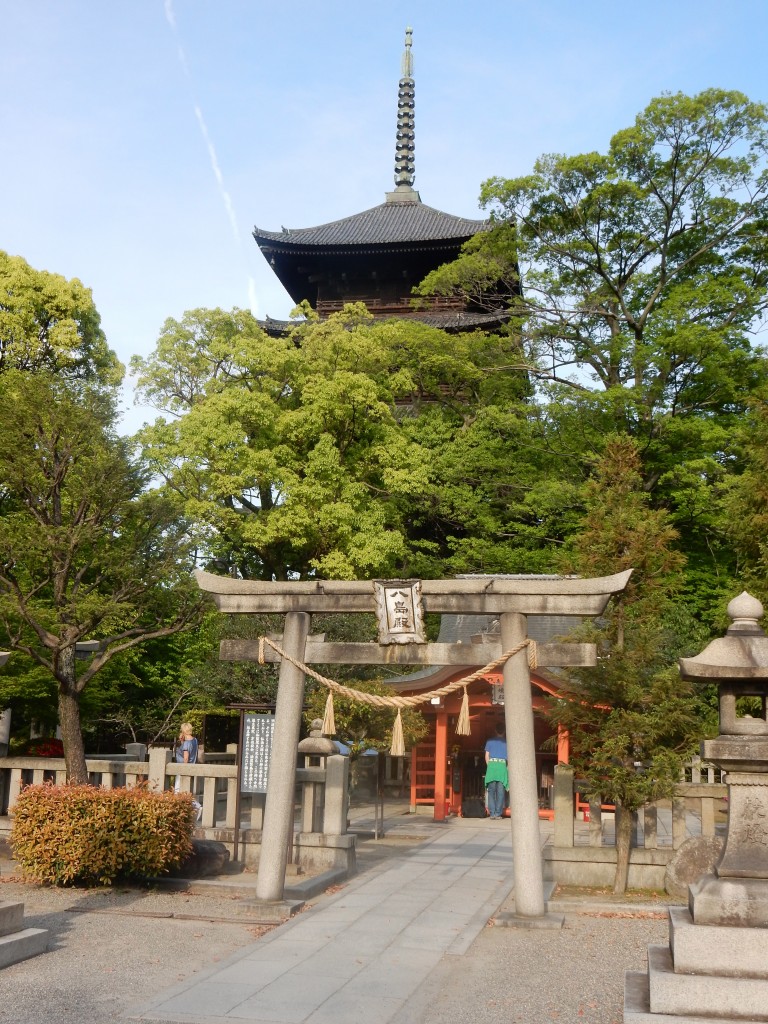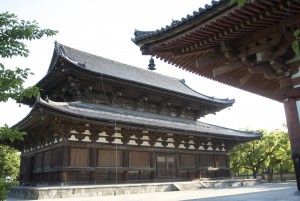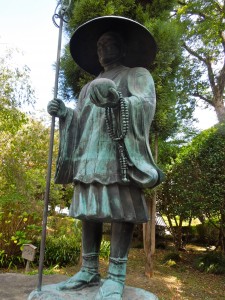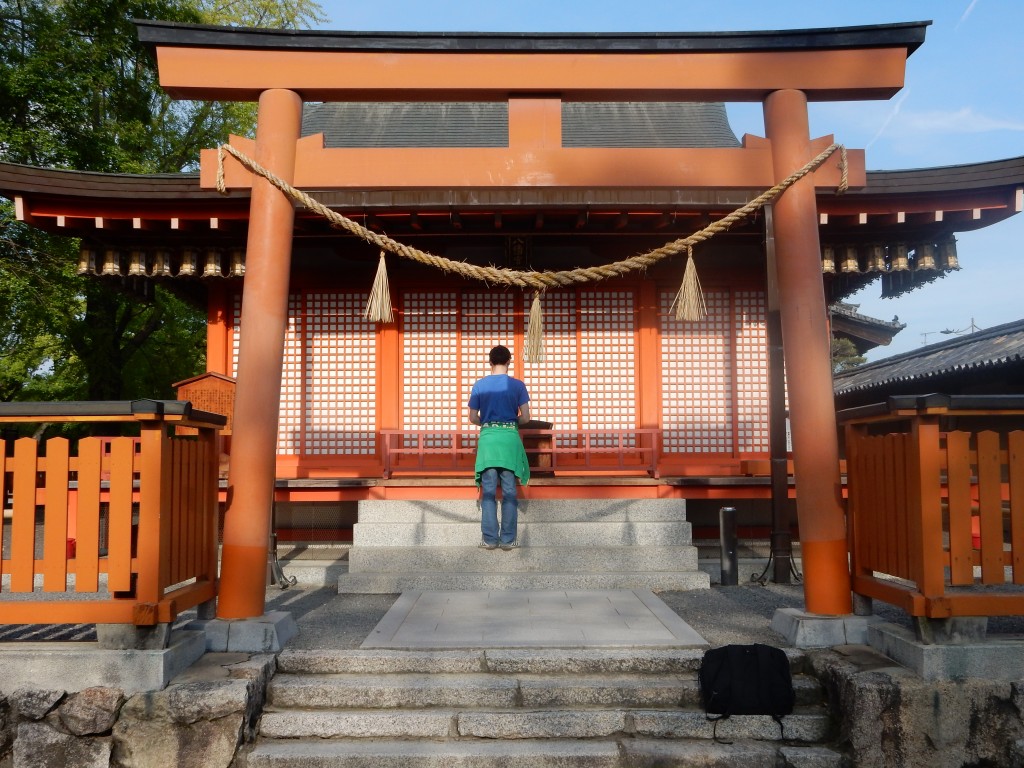
Yashima Shaden, one of Toji Temple’s two shrines that stands in the shadow of the famous pagoda.
It’s an interesting fact that many of Japan’s Buddhist temples house small shrines for protective kami. Sometimes they can quite sizable, similar in appearance to independent Shinto shrines. Quite what the status of these shrines are I’m not sure, but they don’t number amongst official Shinto shrines, which number somewhere between 80,000 and 100,000.
The shrines don’t have Shinto priests attached to them, though they do have rituals performed by Buddhist priests, who are in charge of the well-being of the kami and serving them offerings. Most of these shrines belong to the two esoteric sects, Shingon and Tendai, though there are often kami shrines too in Zen and Nichiren temples. The Pure Land sects tend not to have them.

The magnificent wooden structures of Toji Temple are World Heritage Sites – and guarded by two small shrines.
One of the most interesting examples of shrines within a temple complex can be found in Kyoto’s Tōji Temple. ‘Tōji’ means Eastern Temple, and together with its counterpart Saiji (Western Temple) it was built to be a protective guardian of Heian-kyo (now known as Kyoto). The two temples stood near the southern entrance to the city, to either side of the mighty Rashomon gate.
Tōji was entrusted to Kukai, founder of the Shingon sect, who used the space to build a seminary for his new branch of Buddhism. The result was a magnificent temple, which although it has been greatly reduced in size is still mightily impressive today and houses statuary that is amongst Kyoto’s finest. What’s interesting about the layout is that to either side of the main Southern Gate stand two guardian shrines. The design thus mirrored the city at large, echoing its defensive strategy and feng-shui principles.

Kukai, known posthumously as Kobo Daishi, was the founder of Shingon and sympathetic to the notion of Japan’s kami
The picture at the top of this page shows Yashima Shaden, dedicated to Oonamuchi no kami, lord of the land. The shrine’s name refers to the Eight Islands with which Japan began, suggesting that it was protective of the nation as a whole. According to the accompanying noticeboard, it’s thought the shrine existed prior to the building of the temple and that Kukai asked Oonamuchi to look kindly on the building of his new project.
The temple’s other shrine, which stands to the west of the main gate, is named Tōji Chinju Hachiman-gu. It owed its existence to a disturbance that took place in 810, following which Kukai built a shrine to venerate Hachiman as a protective deity (the kami had fulfilled the same function for Nara’s Todai-ji).
According to the noticeboard, Kukai made three statues from a single tree trunk, which are now hibutsu (secret Buddhist images rarely if ever shown to the public). In the Sengoku Period, arrows directed by Hachiman apparently helped Ashikaga Takauji to victory in his bid to become shogun, in return for which he bestowed gifts on the shrine. In the Meiji Era the shrine bunt down but was rebuilt in 1992.

Green Shinto friend, Quin Arbeitman, pays respects at Tōji Chinju Hachiman-gu

Thanks very much John, That’s a part of the Shinto story I knew very little about. The next time I visit Toji, or temples with similar shrines, I will have a much better understanding of the connections there.